In this webinar and Q&A, solicitor and former regulator David Gardner provides exclusive insights...

Round out your knowledge in clinical skin screening and gain an understanding of dermatopathology.
Designed for Registered Nurses, Nurse Practitioners, and allied health professionals working in specialist skin clinics.
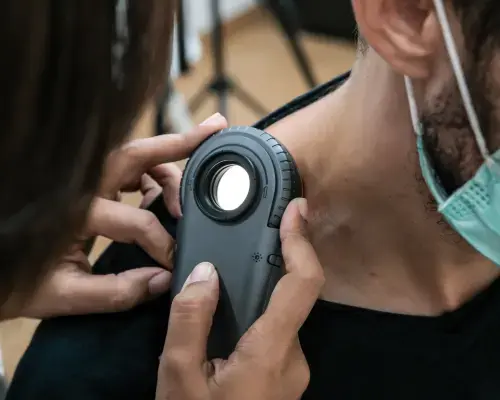
Round out your melanography skills with the knowledge to identify most suspicious skin lesions, including difficult, rare, and aggressive skin cancers, and gain a comprehensive understanding of dermatopathology.
- Develop the skills to play a vital role in the early detection and management of melanoma, thereby helping to improve patient outcomes by ensuring timely intervention and comprehensive care.
- Ideal advanced course for nurses and allied health professionals wishing to become a melanographer.
- Presented by world-leading experts in dermoscopy.
- Reviewed by the International Dermoscopy Society, and Registered Nurses have provided documentation on Scope of Practice for nurses to facilitate their CPD in this field.
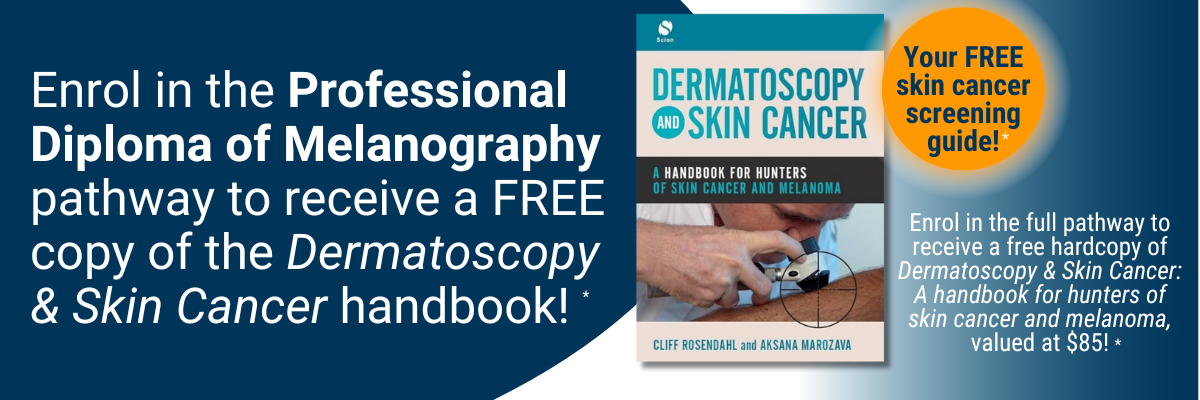
* T&Cs apply: Stocks are limited; offer only available while stocks last and only available to those who enrol in, and pay for, the full three-stage Melanography pathway bundle. Books posted within Australia only; you must have a valid Australian postal address to receive the book. The book will be automatically mailed to you upon successful enrolment.
- Gain the skills to screen the most advanced skin malignancies such as difficult melanomas and rare skin tumours, so you never miss an aggressive cancer.
- Learn to confidently screen the majority of skin lesions for referral to a doctor for diagnosis and treatment.
- Gain a comprehensive understanding of dermatopathology to best assist doctors with diagnostic procedures.
- Provide early intervention for your patients, including those requiring special considerations, such as those having had organ transplants or suffering from HIV.
Get unlimited access to all course content, additional learning materials, ongoing post-course support, and more.
What is a melanographer?
A melanographer is a nurse or health professional whose primary role is to conduct skin assessments and identify suspicious skin lesions for referral to a doctor.
1. Skin assessments and diagnostic procedures: Melanographers are skilled in conducting comprehensive skin assessments to identify suspicious lesions that may indicate skin cancer, using a combination of tools including a dermatoscope and taking images. Melanographers may assist doctors during diagnostic procedures like biopsies.
2. Patient education: Melanographers educate patients about skin cancer prevention and early detection, sun protection, self-examination, and skin checks.
3. A multidisciplinary approach: Melanographers work within a multidisciplinary team which may include GPs, dermatologists, oncologists and other healthcare professionals involved in caring for skin cancer patients.
This module talks about the dermoscopic clues used to identify melanomas that are difficult to diagnose clinically because of their morphology. It highlights the use of dermoscopy to improve the pattern recognition of various types of melanomas including nodular, desmoplastic, amelanotic, epidermotropic metastatic, nevoid, verrucous and melanomas on sun-damaged skin. The dermoscopic images, features and methods to safely deal with these melanomas are discussed in detail throughout this module.
This module focuses on dermatoscopic clues whilst diagnosing and managing rare, complex syndrome skin tumours. A multidisciplinary approach is the key to managing, diagnosing and treating a rare skin tumour. The module discussed the various types of rare skin tumours such as tumours of fibrous tissue, Merkel cell carcinoma, angiosarcoma, adnexal tumours and sebaceous tumours with the help of dermoscopic images. The module also explains in detail, the dermoscopic clues, patterns, and management of each of these rare skin tumours.
This module reviews a collection of more aggressive primary cutaneous malignancies and outlines management options for these tumours. These tumours are hallmarks for adverse outcomes. Many of these entities are relatively rare however some of these more aggressive tumours feature higher rates of mortality and morbidity and clinicians need to be aware of their presentation features and behaviour.
The module lists the diagnostic entities and their specific symptoms, illustrated by various clinical images.
This module commences with outlining the histology of dermoscopy, comparing 10x and 400x magnification and continues with the diagnosis using biopsy and the step-by-step examination in the laboratory. The histology of the skin at different body sites is defined and illustrated. Photographic examples of several skin conditions are shown.
The module demonstrates the difference between melanoma and naevus, listing the symptoms of both. Clinical images are featured throughout the module. Dermatoscopic histological correlation is described. This module concludes with several patient cases, including diagnosis, treatment method and results.
At the beginning of this module the study methodology is given, including tables for classification of melanocytic skin lesions into five diagnostic categories. A standardised classification system should be used to improve clinical practice and pathologists need tools such as molecular markers to support pathologists’ visual assessments. The module lists some review articles and case studies to support learning. The module then compares junctional, compound and dermal naevi and lists the criteria of normal, common and banal naevi. It then lists the different types of melanocytic naevi, illustrated by clinical images of each skin disorder. The module concludes with a chart of algorithmic decision systems to classify patients for their eligibility for of a biopsy. Throughout this module many histology images are shown and some patient cases are mentioned.
Then, this module explains the pathology of different melanomas, supported by histology images. It emphasising the diagnosis of melanomas and prognostic indicators. Clinical histology images are shown throughout the module. An overview is given of several articles and studies to support the learning.
This module begins with an overview of the tasks for the dermatopathologist and the clinician, providing appropriate information and specimens. Reasons for performing a skin biopsy are given as well as examples of appropriate biopsy specimens. The technical aspects and examples of punch biopsy, shave biopsy and elliptical biopsy are included. Meta-analysis of margins as well as comparison and risk ratios of different margins are given, illustrated by a chart of the relationship between surgical margins and recurrence rates. A description is given of both negative and positive histological margins. The module concludes with a classification chart of algorithmic decision systems using data and statistical analyses. Throughout this module many histology images are shown and some patient cases are discussed.
The module begins with a description of special host and topography when applying skin cancer medicine to patients requiring special consideration, including patients having had organ transplants or suffering from HIV/aids. Another risk category are genetically predisposed patients who have an increased likelihood of developing a particular disease based on their genetic makeup.
A range of rare disorders/disease syndromes are discussed. Clinical images and research articles are included throughout the module. Several studies of melanoma patients are included. The module concludes with an overview of infrequently self-examined areas and featureless melanomas.
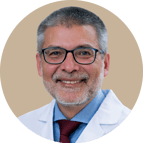
Attending Physician, Dermatology Service, Memorial Sloan Kettering Skin Cancer Center, New York, USA
Professor Ashfaq A. Marghoob is a board-certified dermatologist specialising in the diagnosis and treatment of cancers of the skin. He is the director of Memorial Sloan Kettering’s regional skin cancer clinic in Long Island and consults and treats patients in the centre’s outpatient facility in Manhattan.
Although providing the best care possible for his patients remains his primary goal, Ashfaq also remains committed to education and clinical research, with the hope of educating physicians and the public about the importance of early skin cancer detection to save lives.
He is active in clinical research and has published numerous papers on topics related to skin cancer with an emphasis on melanoma, atypical/dysplastic nevi, and congenital melanocytic nevi. Ashfaq’s research interests are focused on the use of imaging instruments such as photography, dermoscopy, and confocal laser microscopy to recognise skin cancer early in its development.
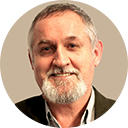
Professor and Course Coordinator MMed (Skin Cancer) Program School of Medicine, The University of Queensland
Professor Cliff Rosendahl currently works in Brisbane as a primary care practitioner with a special interest in skin cancer. He also has an interest in research as the clinical developer and Director of the Skin Cancer Audit Research Database (SCARD). His other main area of research has been in evaluating dermatoscopic clues for the diagnosis of both pigmented and non-pigmented skin malignancy in collaboration with colleagues at The University of Queensland, Australia and the Medical University of Vienna, Austria.
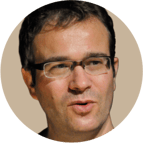

Associate Professor Skin Cancer Medicine, The University of NSW
Associate Professor John Pyne was conferred with a Master of Medicine at The University of Queensland, then held a position of Program Director for The University of Queensland Skin Cancer Masters from 2007 until 2013. The thesis for John’s PhD was on the correlations between dermatoscopy and histopathology for BCC and SCC. He is also a past President and Fellow of the Skin Cancer College of Australasia.
John has a main interest in the optical imaging of early primary non-lymphoid cutaneous malignancy and correlations with histopathology. He is currently investigating surgical margins in management of these cancers. John has teaching appointments at The Universities of Queensland, New South Wales and Western Sydney.

Honorary Lecturer in Pathology, The University of Queensland
Dr Simon Clark runs the pathology component of the postgraduate certificate courses in skin cancer medicine at The University of Queensland and lectures in the Masters of Medicine course. He has been involved in dermatopathology education for more than 20 years, training registrars in dermatology, pathology and plastic surgery. More recently he has been active in GP education. One of the best known dermatopathologists in Australia, Simon was recently appointed a visiting professor in dermatology at the Tehran University of Medical Sciences.

Dermatologist, Santa Maria Nuova Hospital, Reggio Emilia, Italy
Dr Elvira Moscarella is a dermatologist at the Santa Maria Nuova Hospital in Reggio Emilia, Italy. She acquired her medical degree in 2005 at the Second University of Naples before completing her residency in dermatology and venereology at the University’s Department of Dermatology. In 2008, Elvira undertook further education in dermoscopy and confocal microscopy. She is a member of the European Academy of Dermatology and Venereology and the International Dermoscopy Society, and is Editor in Chief of the latter’s newsletter and case of the month. Elvira’s main interests are in dermoscopy and reflectance confocal microscopy, and their use in skin cancer medicine.

$1495
.
Bundle two courses and save 5%, or three courses and save 10% upon enrolment.
Talk to us about deferred payment options, registrar scholarships and special rates.

An excellent course introduction to dermoscopy and relating what you see to the histopathology and applying this in clinical practice. Great lectures and supporting materials.
S. Jan
Excellent! This is a great course that has helped me diagnose many more subtle, early skin cancers especially melanoma in situ. The course was clearly presented, with good pictures and course book. All HealthCert's skin cancer courses have been hugely valuable to my practice!
R. Mundell
I highly recommend this course. I increased my knowledge and developed confidence in using dermoscopy and in diagnosing melanoma and other skin lesions. Every skin lesion I see means so much more now that it has a name. Great involvement from various skin cancer experts and great videos and reference materials.
P. Ishri
I would recommend this course as an important addition to self-directed learning in dermatoscopy. It was a invaluable course to gain the diagnostic tools, knowledge and confidence in managing skin cancer. The course was professionally conducted with excellent presentations.
L. Suntesic
I really enjoyed the level of learning. It is very rewarding to know that I am potentially saving lives. Recently I volunteered with the Lions Cancer Institute for two days, and we screened 158 patients, detected 38 possible melanomas and 83 keratinocyte skin cancers. It was a very successful and rewarding two days, and something I could do confidently because of my learning from this course.
K. Laverty
| RACGP Activity Number | ACRRM Activity Number | Activity Title | Education Hours | Performance Hours | Outcome Hours | ||
|---|---|---|---|---|---|---|---|
| 403783 | 28433 | Acral lesions | 403783 | 28433 | 3.5 | 6 | 0 |
| 403786 | 28434 | Melanoma | 403786 | 28434 | 4.5 | 6 | 0 |
| 403766 | 28428 | The Chaos and Clues method | 403766 | 28428 | 4.5 | 6 | 0 |
| 403764 | 28427 | Algorithms and the elephant approach | 403764 | 28427 | 4 | 6 | 0 |
| 403772 | 28430 | Malignant non-melanocytic lesions commonly seen in the practice | 403772 | 28430 | 4 | 6.5 | 0 |
| 403778 | 28432 | Facial lesions | 403778 | 28432 | 4.5 | 6.5 | 0 |
| 403769 | 28429 | Benign non-melanocytic lesions commonly seen in the practice | 403769 | 28429 | 3.5 | 5.5 | 0 |
| 403775 | 28431 | Melanocytic nevi | 403775 | 28431 | 4 | 5.5 | 0 |
| 800429 | 32973 | Acral Lesions Outcome Improvement Activity | 800429 | 32973 | 0 | 0 | 8.5 |
| Total hours | 32.5 | 48 | 8.5 | ||||
The purpose of outcome measurement activities is to improve your clinical confidence in managing an identified learning gap. Outcome measurement activities are not a requirement of our Professional Certificate of Advanced Certificate courses; they are a requirement for Australian CPD purposes.
HealthCert Education provides a variety of outcome measurements activities to suit your needs:
HealthCert Education offers courses suitable for allied health professionals and all nurses, including Enrolled Nurses, Registered Nurses, and Nurse Practitioners. Please read the course description carefully to select a course that is right for your nursing role.
The Professional Diploma of Melanography is suitable for allied health professionals, Registered Nurses, and Nurse Practitioners who work in specialist skin clinics and who are interested in primary care dermoscopy for the screening of skin conditions commonly seen in day-to-day primary care.
Participants must have successfully completed the HealthCert Advanced Certificate of Melanography (or a qualification deemed equivalent).
Participants do not have to pass an IELTS test but, as the courses are delivered in English, proficiency in listening, reading and writing English is assumed.
Participants will require access to a computer/laptop, an internet connection and a basic level of technology proficiency to access and navigate the online learning portal.
Professionally recognised qualifications and prior studies may be recognised for entry into this course if the learning outcomes match exactly. Please ask a HealthCert Education Advisor for an individual assessment of your prior qualifications and experience.
Upon successful completion of this course, you will receive the Professional Diploma of Melanography in recognition of your skills.
This certificate course:
Professional Diploma pathway
This course is the first stage of the three-part professional diploma pathway. The full pathway is Professional Certificate of Melanography, Advanced Certificate of Melanography, and Professional Diploma of Melanography.
Postgraduate Pathway
Graduates of the HealthCert Professional Diploma of Melanography qualify for a scholarship into the Master of Science: Dermatology in Clinical Practice. This is an online course from our partners in the UK and awarded by the University of Buckingham. Please ask HealthCert Education Advisors for more details.
Clinical trials for melanography
There are many clinical trials in Australia and overseas relating to skin cancer. To follow or join a clinical trial in Australia, please search here for the condition.
HealthCert Education is an RACGP-accredited CPD provider under the RACGP CPD Program.
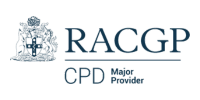
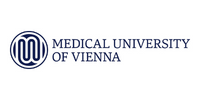
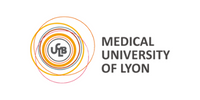


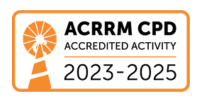
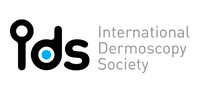
Don't see your question? Explore other faqs or talk to us.
Melanographers are an important part of the medical team in a primary care skin cancer practice, and their work identifies skin cancer and saves lives.
It is the role of the melanographer to identify any suspicious lesions and report these findings to the doctor. It is then the responsibility of the doctor to diagnose and manage the patient’s condition in accordance with evidence-based practice. Melanographers work under the supervision of doctors such as dermatologists or general practitioners specialising in skin cancer. They play a crucial role in melanoma detection through skin assessments, dermoscopy and patient education. However, their scope of practice does not include making independent diagnoses or prescribing treatments.
It is essential that nurse melanographers have specialised training in dermatology and melanoma detection. This includes: i) formal education, ii) continuing education courses, and iii) clinical training. They are required to stay up to date with all current guidelines, best practices and advances in melanoma detection.
Payments can be made upfront or in monthly instalments. Special rates and various payment options are available, including discounts for course bundles. Talk to us to learn more.
Completion of any HealthCert course or attendance at an event will enable you to access the HealthCert Alumni Program which includes:
HealthCert Education is pleased to issue digital credentials for alumni. Digital credentials are a permanent online record of your successful completion of a HealthCert course and are issued to all course participants in addition to PDF certificates. If you are based in Australia, you also have the option to order a hard copy of your digital certificate for a small additional fee.
The study duration of this certificate course is 82 hours, plus online assessment and private study. This self-paced course offers the flexibility of 100% online study in your own time, at your own pace, in your own home or office, with no mandatory face-to-face requirements. You are not required to be online at specific times but can view and replay video lectures at your convenience.
All HealthCert courses meet World Federation of Medical Education standards. If you live or work outside of Australia, please contact us at admin@healthcert.com to discuss whether this course can be recognised in your country.

In this webinar and Q&A, solicitor and former regulator David Gardner provides exclusive insights...
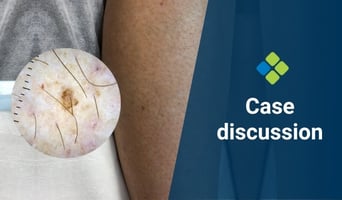
This week's case discussion, submitted by Dr Heather Lawson, features a 64-year-old female patient...

Mood changes in the postpartum period are extremely common, ranging from mild and transient “baby...
Want to stay up-to-date with the latest case studies, podcasts, free video tutorials and medical research articles pertinent to primary care?
Our Education Advisors can assist you with any queries and tailor our education pathway to suit your current expertise, interests and career goals.